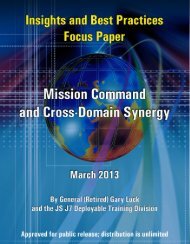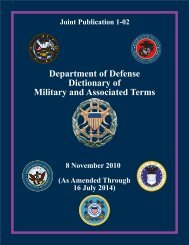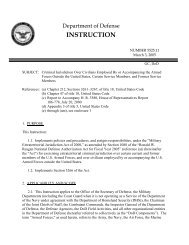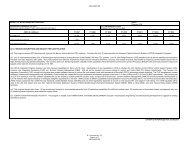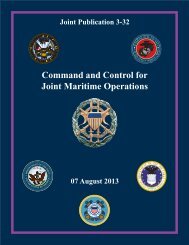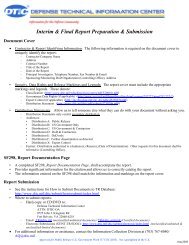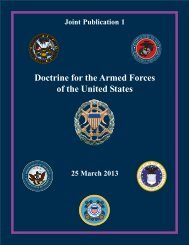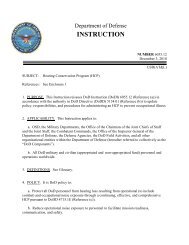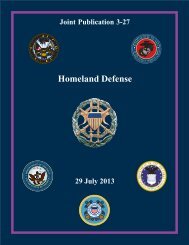JP 3-16, Multinational Operations - Defense Technical Information ...
JP 3-16, Multinational Operations - Defense Technical Information ...
JP 3-16, Multinational Operations - Defense Technical Information ...
Create successful ePaper yourself
Turn your PDF publications into a flip-book with our unique Google optimized e-Paper software.
Planning and Execution Considerations<br />
33. Foreign Humanitarian Assistance<br />
a. FHA operations, particularly in developing countries, often require the intervention<br />
and aid of various agencies from all over the world in a concerted and timely manner. As a<br />
result, operations involve dynamic information exchange, planning, and coordination. For<br />
more information, see <strong>JP</strong> 3-29, Foreign Humanitarian Assistance.<br />
b. The engagement of military forces in FHA operations is based on the necessity for<br />
speed of reaction, including proximity of suitable resources to the disaster area, the scale of<br />
effort required or special skills to deal with the consequences of a humanitarian<br />
emergency/disaster. Military forces will, therefore, normally only be engaged in response to<br />
rapid onset disasters and normally at the request of humanitarian organizations through<br />
official governmental channels. The magnitude of a disaster or the threat environment may<br />
also call for military involvement in the national response. National TFs will thus provide<br />
specific support to particular requirements in response to an acknowledged humanitarian gap<br />
between the humanitarian emergency/disaster needs and relief community resources<br />
available to meet those needs. FHA operations will, therefore, normally be limited in both<br />
scope and duration.<br />
c. FHA is not the primary role of military forces. However, military forces have an<br />
ability to quickly task organize to perform such operations and have unique capabilities that<br />
can complement the overall relief effort. In principle, military assets should be considered<br />
only when civilian capabilities have been or will become over-stretched or are unavailable,<br />
and in certain circumstances, where the use of military assets is determined to be more costeffective<br />
in overall terms. The composition of the national TF committed in support of FHA<br />
will vary depending on the circumstances, the state of civilian coping mechanisms, and the<br />
complexity of the disaster.<br />
d. Normally, due to the urgency of the situation, severe time constraints, and emergency<br />
relief response requirements, FHA will not be executed by a multinational command; rather,<br />
a parallel command structure of individual JTFs executing under national command is used.<br />
Under such situations an MNCC, established by one of the JTFs in support of all JTFs, is an<br />
option for multinational coordination of FHA operations. In such contingencies the MNCC<br />
also acts as a CMOC and/or CIMIC coordination center in addition to providing coordination<br />
of military support operations.<br />
e. When military forces are involved in FHA operations their assets are provided<br />
primarily to supplement or complement the relief efforts of the affected country’s civil<br />
authorities and/or of the humanitarian relief community. This support may include but is not<br />
limited to logistics, transportation, airfield management, communications, medical support,<br />
distribution of relief commodities, and security.<br />
f. Notwithstanding specific missions, under all but exceptional circumstances, military<br />
forces deployed in support of disaster relief efforts should normally not assume leadership of<br />
the overall disaster relief. This does not preclude supporting civil C2 or providing C2<br />
infrastructure when necessary. However, wherever possible, maximum use of established<br />
infrastructure should be made in order to preclude the national TF from becoming a hub<br />
III-53



